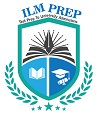Best SAT Coaching Classes, SAT Test Prep Course in Kuwait
The paper-pencil format is no longer used by the SAT. The digital edition of the SAT is now here, after much anticipation! The most widely utilised assessment tool used by colleges across the globe to determine admission to undergraduate programs is the Digital SAT (DSAT). Thus, in order to be admitted at the university of your dreams, you must join the SAT coaching in Kuwait or SAT courses in Kuwait. ILM PREP provide the best SAT classes in Kuwait, SAT prep courses in kuwait with SAT Practice Test and Online SAT classes.
Book Consultation
Join the Best SAT Classes, SAT Test Prep Courses, SAT Training in Kuwait
The Digitized SAT: here’s all you need to know:
At ILM Prep, we have already started making our students SAT practice questions and papers based on the DSAT Format in order to ensure that our students are fully prepped and ready for acing the Digital SAT. Our test prep experts have prepared SAT practice test content to reflect the pattern and level of SAT exam questions being tested on DSAT so that our students are fully test ready.
Digital SAT Test Format
| Section Name | Number of Questions | Duration (in Minutes) |
| Reading and Writing Modules 1 and 2 | 54 | 64 |
| Math Modules 1 and 2 | 44 | 70 |
| Total | 98 | 134 |
| Total Score | 800 | 800 |
COURSE FEATURES
- Mark for Review
- Strikethrough
- Quicker score delivery
Comprehensive Preparation course
ILM Prep offers the most comprehensive SAT prep course in Kuwait that covers all the topics, concepts, patterns and difficulty levels tested on the real SAT.
Customized Study Materials
We provide customized study materials keeping in view your current level and your required score to ensure that you get the most effective SAT preparation Program.
Question Bank
Our exhaustive SAT Question Bank, SAT foundation materials and SAT advanced prep kits and SAT Mock Tests would ensure that your preparation is effective.
Skilful Instructors
Our course stands out because of our skilful instructors who are not only subject-matter experts in Math and English.
SAT Test Preparation options available at
ILM PREP.
SAT Classroom Coaching
-
32 hours of expert teaching by ILM Prep’s highly experienced Master trainers
-
30 full length practice tests that simulate the pattern and level of the real SAT exam
-
Not more than 12 students in a batch
-
Highly personalized instruction with full individual attention
-
Practice with real, latest updated SAT practice questions, official study materials and SAT practice tests.
-
Regular Practice Test Feedback to analyze your strengths and weaknesses
-
Specialized Boot Camps to cover US History, World Events and other topics to improve reading speed, grammar skills and math foundations.
SAT Live-Online Small Group Tutoring
-
32 hours of effective coaching from ILM Prep’s expert Master faculty
-
30 Practice tests that simulate the pattern and difficulty level of the real exam
-
Not more than 12 students in a batch, ensuring personalized instruction with full individual attention
-
Regular Practice Test Feedback in class to analyze your strengths and weaknesses
-
Specialized Boot Camps to cover US History, World Events and other topics to improve reading speed, grammar skills and math foundations.
-
Ideal for those who want to learn from the comfort and safety of their homes
SAT Live-Online Private Tutoring
-
Customized one-on-one tutoring with ILM Prep’s highly experienced faculty
-
30 Full length Practice tests that simulate the pattern and level of the real exam
-
Practice with real SAT questions, official study materials and practice tests
-
Regular Practice Test Feedback to analyze your strengths and weaknesses
-
Course Duration can be customized depending upon your time, availability, and pace of learning
-
Ideal for those who want to learn from the comfort and safety of their homes and have limited time to prepare for the exam.
Here are Answers to
Some FAQS




